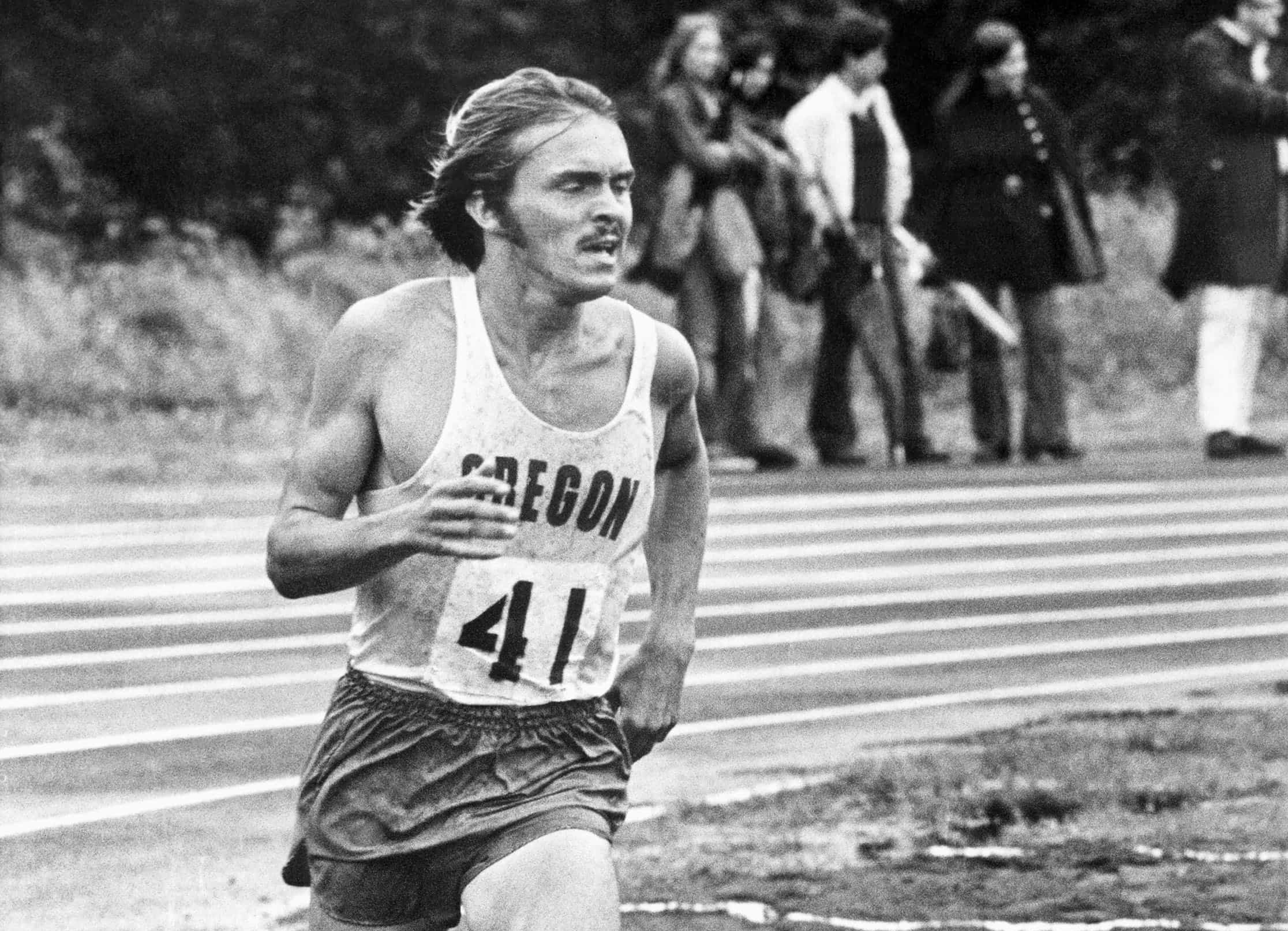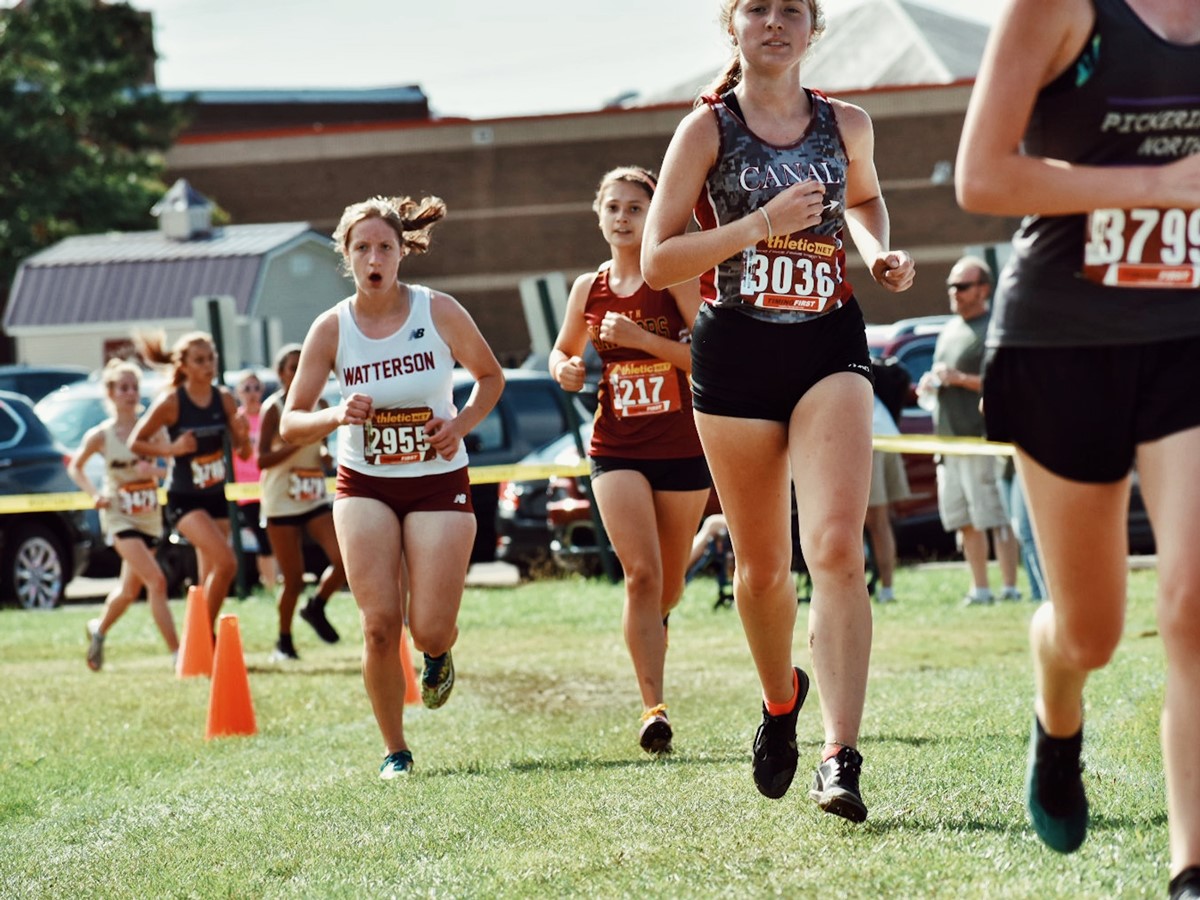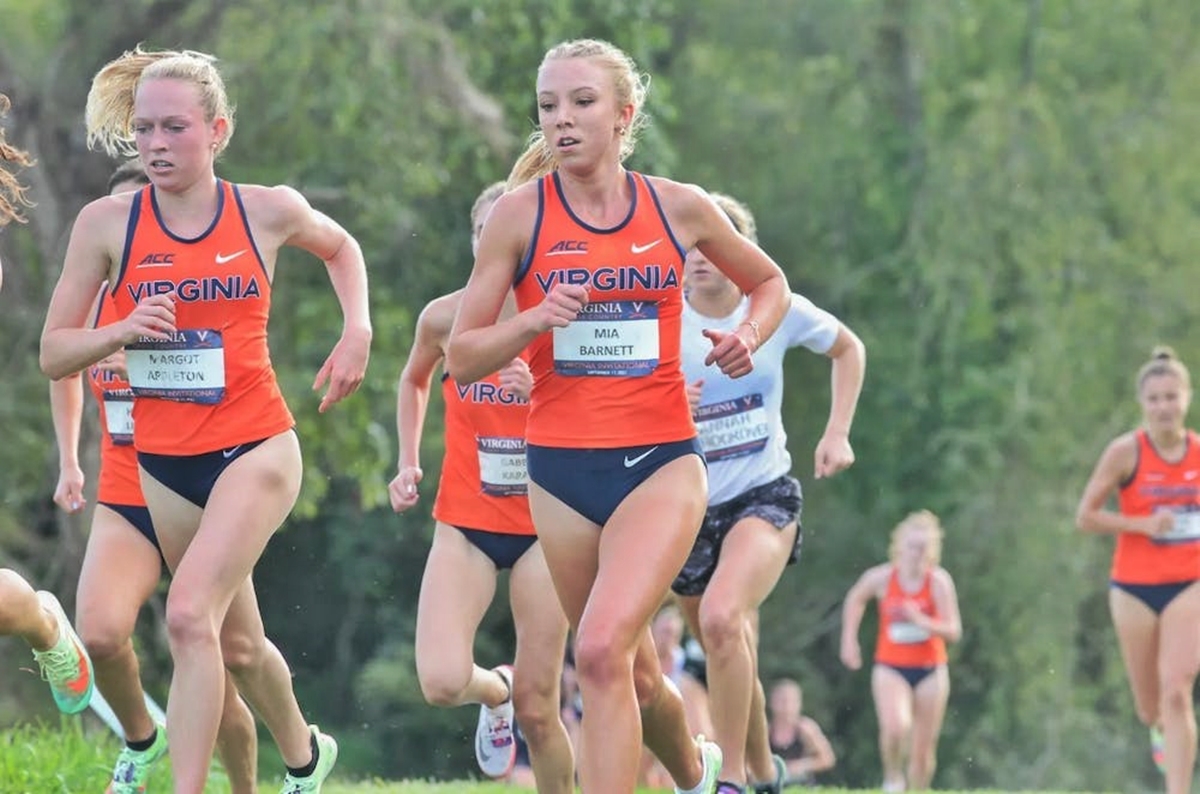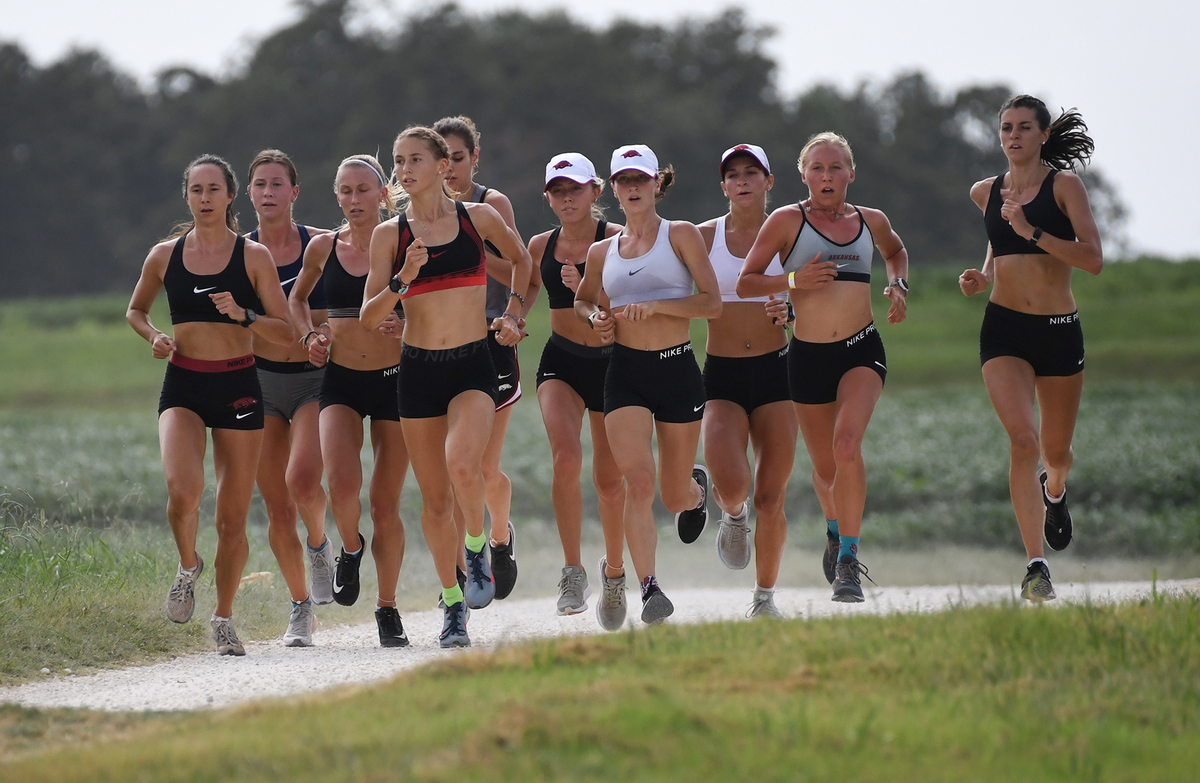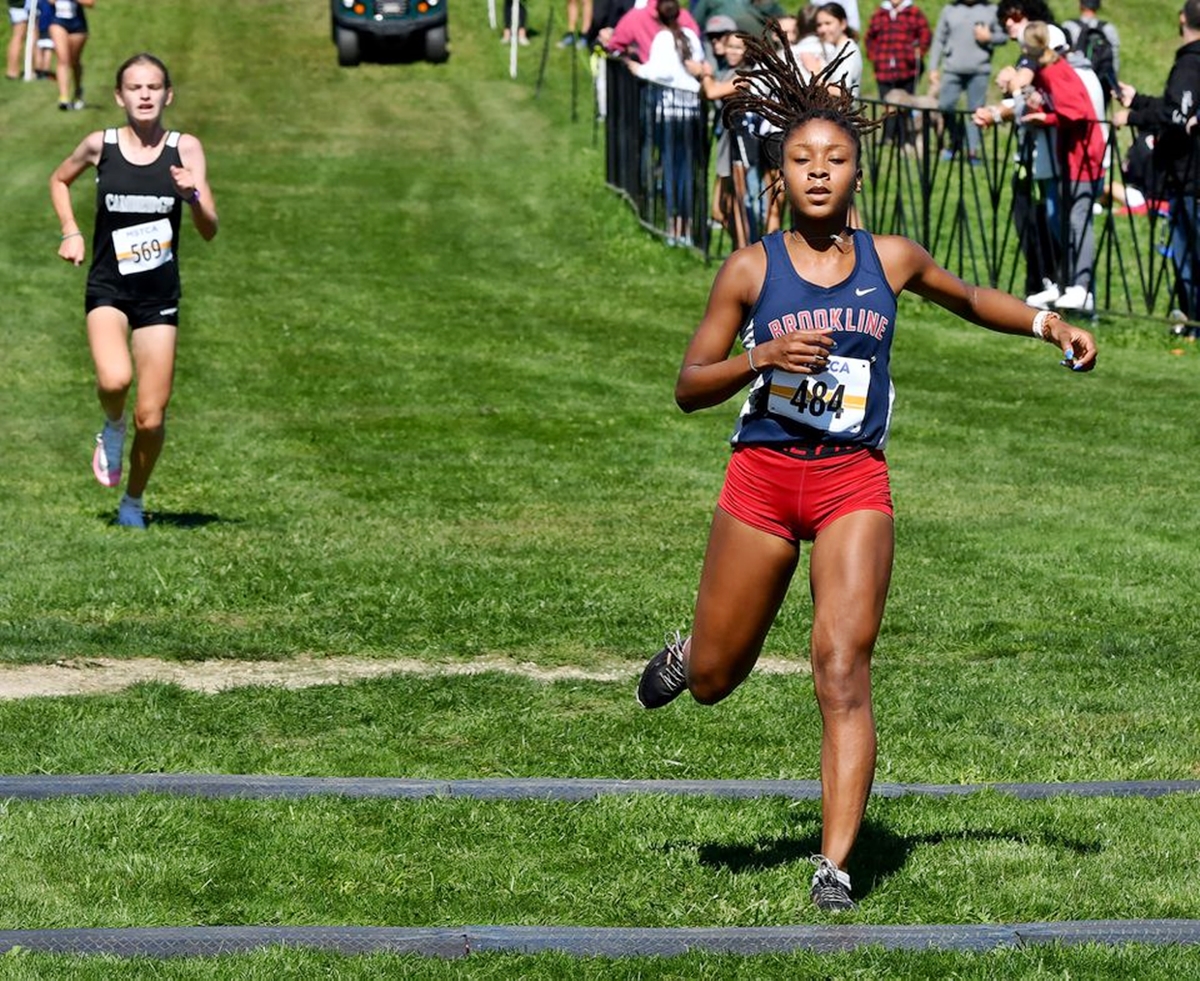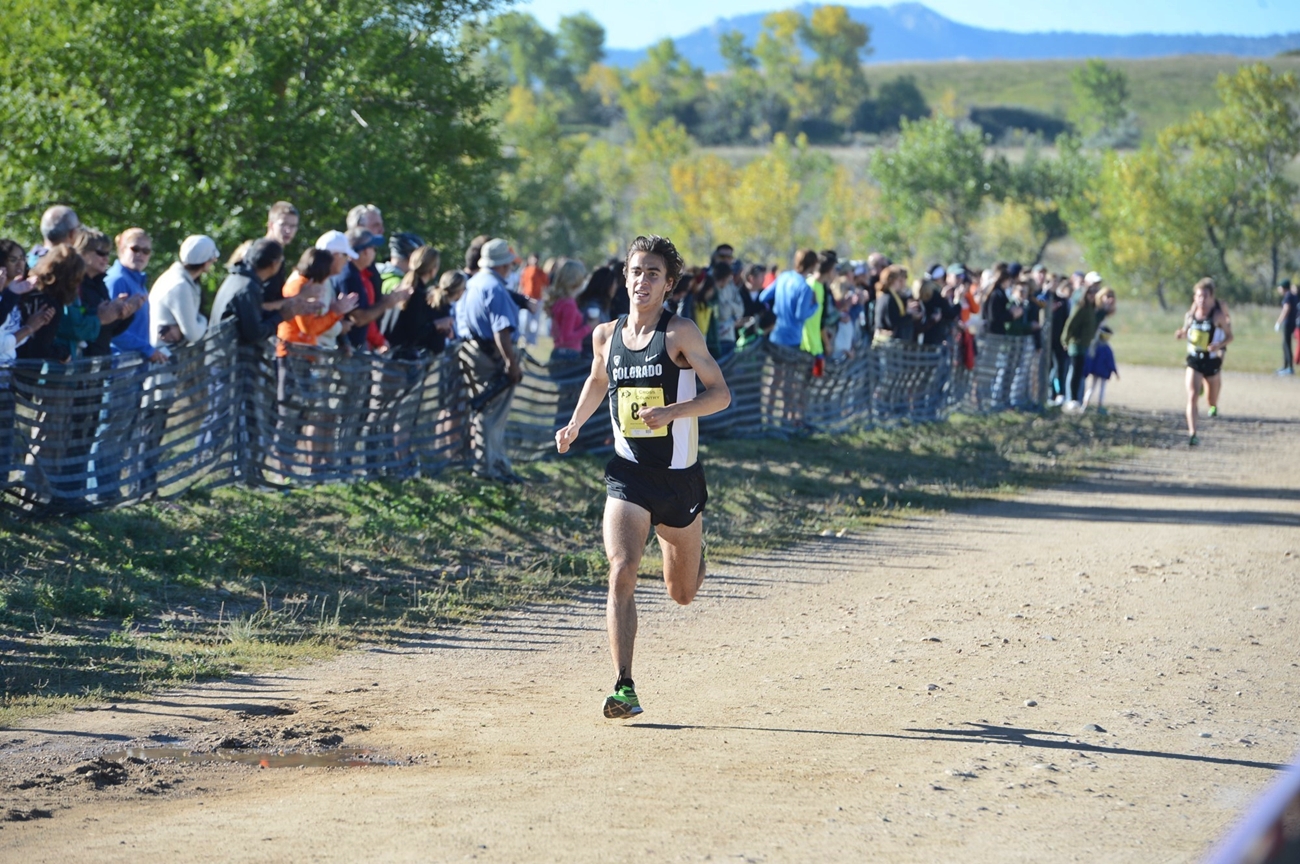Home>Misc>Featured>How Is Cross Country Different From Track


Featured
How Is Cross Country Different From Track
Modified: January 22, 2024
Discover the key differences between cross country and track and understand why featured athletes excel in both disciplines.
Introduction
Cross country and track are two popular sports that often go hand in hand. While they both involve running, there are distinct differences between the two. Cross country is a sport where runners compete on natural terrain, such as fields, trails, or hills, while track involves running on a specific oval-shaped track. These differences go beyond the surface and impact various aspects of the sports, including training, distances, team dynamics, strategy, and equipment.
Cross country is known for its challenging terrains and unpredictable elements, providing a unique experience for runners. The sport requires strong endurance, as athletes must navigate through different surfaces and terrains, such as grass, mud, and gravel. On the other hand, track is characterized by its controlled environment, with runners following a consistent surface and distance for each race.
Training and conditioning also differ between cross country and track. Cross country training often focuses on building endurance, strength, and mental toughness to tackle various terrains. Runners engage in long distance runs, hill workouts, and interval training to prepare for the challenges they may encounter during races. In track, training is more specialized, with athletes focusing on their specific events such as sprints, hurdles, middle distance, or long distance. Speed training and technique refinement are key components in track training.
The distances and courses in cross country differ from those in track. Cross country races are typically longer, ranging from 5 kilometers (3.1 miles) to 10 kilometers (6.2 miles) for men, and slightly shorter for women. These races take place in natural settings, with courses designed to test runners’ endurance and strength. In contrast, track races have standardized distances, ranging from 100 meters to the marathon. They take place on rubberized tracks, allowing for fast and predictable racing conditions.
Team dynamics and individual performance also play a role in distinguishing cross country from track. In cross country, the emphasis is placed on both individual and team performance. Teams consist of multiple runners who score points based on their rankings, and the team with the lowest score wins. This fosters a sense of camaraderie and teamwork among teammates. In track, individual performance is the primary focus. Runners compete in their respective events, aiming to achieve personal bests and qualify for major competitions.
Training and Conditioning
Training and conditioning in cross country and track differ in terms of focus, intensity, and specificity. Cross country training is geared towards building endurance, strength, and mental toughness to tackle the challenges of varied terrains, while track training is more specialized, focusing on specific event skills and speed.
In cross country, endurance is crucial due to the longer race distances. Runners engage in long distance runs to build their aerobic capacity, allowing them to maintain a steady pace over challenging terrains. These runs are often supplemented with hill workouts to strengthen leg muscles and improve running economy on inclines. Interval training, such as speed repeats, can also be incorporated to enhance speed and stamina.
Strength training is another key component of cross country conditioning. Runners perform exercises that target their lower body muscles, including squats, lunges, and plyometrics. This helps improve muscular strength, power, and stability, enabling runners to navigate through uneven terrains and maintain proper form throughout the race.
Mental toughness is vital in cross country, as runners must overcome physical and mental challenges presented by the course. Training includes mental preparation, visualization techniques, and mental strategies to stay focused and maintain motivation during races. The ability to adapt to changing conditions and push through fatigue is essential.
Track training, on the other hand, is more event-specific. Sprinters focus on explosive power, speed, and technique. Their training includes short burst sprint intervals, plyometrics, and strength exercises that target fast-twitch muscles. Hurdlers work on developing proper hurdle technique, rhythm, and stride pattern. Middle-distance runners train for speed and endurance by incorporating varying distances and paces into their workouts.
Long-distance track runners focus on building an exceptional aerobic capacity while maintaining speed. Interval training plays a significant role, with runners alternating between race pace efforts and recovery periods. Additionally, track athletes often engage in speed development drills to improve their running form and maximize efficiency.
While there are differences in training and conditioning between cross country and track, both sports require commitment, discipline, and a structured training plan to reach peak performance. Coaches play a crucial role in designing training programs that align with the specific demands of each sport and the individual needs of athletes.
Distances and Courses
The distances and courses in cross country and track are distinct, catering to the specific nature and requirements of each sport. Cross country races often feature longer distances and diverse terrains, while track races adhere to standard distances and take place on a uniform oval-shaped track.
In cross country, race distances vary depending on the level of competition and the age group. For high school and collegiate runners, cross country races typically range from 5 kilometers (3.1 miles) to 10 kilometers (6.2 miles) for men, and slightly shorter distances for women. These races are typically held on courses that traverse natural terrains such as fields, trails, hills, and even forests. The unpredictable, challenging nature of the terrain adds an element of excitement and strategy to the race.
Course design in cross country aims to test runners’ endurance, strength, and ability to adapt to varying conditions. Courses often feature uphill and downhill sections, muddy patches, and uneven surfaces. Runners must navigate through obstacles while maintaining their pace and positioning. The strategic aspect of cross country lies in finding the right balance between conserving energy and making strategic moves to gain advantages during the race.
Track races, on the other hand, follow standardized distances. The most common track events include sprints (100 meters, 200 meters, and 400 meters), middle-distance (800 meters, 1500 meters), and long-distance races (5000 meters, 10,000 meters). The marathon, the longest track race, covers a distance of 42.195 kilometers (26.2 miles).
Track races take place on an oval-shaped track, which is typically 400 meters in length. The consistent surface and precise measurements of the track ensure fair competition and accurate timing. The track surface is usually made of rubber, providing grip and cushioning for optimal performance. This controlled environment allows athletes to focus on speed, technique, and strategy without the unpredictability of varied terrains.
Course strategy in track often involves pacing, positioning, and timing. Runners aim to run at optimal speeds for each lap, conserving energy for a strong finish. Tactics, such as drafting off other runners or making strategic moves to pass competitors, can play a significant role in achieving success in track races.
While both cross country and track involve running, they present different challenges and require different skill sets. Cross country tests endurance, strength, and mental toughness in varied terrains, while track emphasizes speed, technique, and tactical racing on a controlled surface. Whether a runner prefers the excitement and unpredictability of cross country or the precision and speed of track, both sports offer unique experiences and opportunities for growth.
Team Dynamics and Individual Performance
Team dynamics and individual performance are significant aspects that differentiate cross country from track. While both sports require individual dedication and commitment, cross country places a greater emphasis on team camaraderie and scoring, whereas track focuses primarily on individual achievements.
In cross country, teams consist of multiple runners who compete together and score points based on their placements. Typically, the top five or seven finishers from each team contribute to the team score, with the lowest total score winning the meet. This team-based scoring system fosters a sense of camaraderie and encourages runners to support and motivate one another.
The team aspect of cross country creates a collaborative and supportive environment. Runners train together, push each other during workouts, and strategize race tactics as a team. The team dynamic allows for shared experiences, camaraderie, and a support system that helps athletes overcome challenges and achieve their goals.
Individual performance is also highly valued in cross country. Runners strive to improve their personal bests and aim for top placements within their teams and meets. However, the collective effort of the team is paramount, as every runner’s performance contributes to the overall score. Encouragement, teamwork, and the shared goal of winning as a team foster a strong sense of unity and shared success.
In track, individual performance takes center stage. Athletes focus on their specific events and strive to achieve personal bests, qualify for championships, and set records. While track athletes may be part of a team representing their school or club, the team scoring is not as prominent as in cross country.
Track events, such as sprints, middle distance, hurdles, and field events, are often competed individually. A runner’s performance is measured by their time, distance, or height, with the goal of surpassing their personal best or achieving set standards for advancement. Personal achievement and self-improvement are core motivations in track as athletes strive to reach their full potential in their chosen events.
That being said, there can still be an element of team support and camaraderie in track. Teammates often practice and train together, providing encouragement and feedback. This mutual support helps create a positive team environment, even though the focus is primarily on individual performances.
Both cross country and track foster the development of individual skills, discipline, and dedication. Cross country emphasizes teamwork, unity, and shared accomplishments, while track focuses on individual achievements and self-improvement. Both sports offer unique opportunities for athletes to challenge themselves, grow as individuals, and form lasting bonds with teammates.
Strategy and Tactics
Strategy and tactics play a crucial role in both cross country and track, impacting the outcomes of races and the success of individual athletes. However, the strategy and tactics employed in each sport differ due to the varying nature of the races and the dynamics of the competition.
In cross country, strategy often revolves around pacing and positioning. Runners must carefully manage their effort throughout the race to maintain a sustainable pace and conserve energy for the later stages. The challenging terrains and diverse course elements require adaptable strategies based on factors such as uphill sections, downhill descents, and varying surfaces.
One common cross country strategy is to start conservatively to avoid burning out early in the race. Runners may initially position themselves slightly behind their competitors, using the first few kilometers to settle into their rhythm and assess the competition. As the race progresses, runners strategically make calculated moves to pass opponents and maintain or improve their position.
Another important tactical consideration in cross country is the ability to adapt to unforeseen obstacles or challenging conditions. Runners may need to adjust their stride or alter their route to overcome hurdles such as muddy patches, water obstacles, or steep inclines. The ability to make quick decisions and adapt to changing circumstances can make a significant difference in the outcome of the race.
Track races, on the other hand, often require a more calculated and precise approach. Races on the track have standardized distances and predictable conditions, allowing athletes to plan their strategies beforehand. Tactics in track can vary based on the event, but they generally involve elements such as pacing, positioning, and timing.
In track sprint events, for example, the start and acceleration play a crucial role. Runners strategize on achieving a strong start and maximizing their speed in the initial stages of the race. They aim to position themselves advantageously against their competitors and maintain their speed throughout the race, making strategic moves to overtake opponents while conserving enough energy to finish strong.
Middle-distance races in track, such as the 800 meters and 1500 meters, require a balance between speed and endurance. Runners must determine the optimal pace to hold throughout the race, find opportunities to surge ahead or make tactical moves to pass competitors, and save enough energy for a strong final sprint. Knowing when to make these moves is essential for a successful race.
In relay events, both cross country and track require coordination and teamwork. Runners must strategize on leg assignments, handoff techniques, and maintaining a smooth and efficient rhythm to ensure a seamless transition and maximize their team’s performance.
Ultimately, strategy and tactics in both cross country and track depend on the individual runner’s strengths, the nature of the race, and the competition. A successful strategy requires a balance of physical preparedness, mental focus, and adaptability to changing circumstances. Coaches and experience can guide runners in developing effective strategies and tactics, but ultimately, the ability to make split-second decisions and execute them with precision is what sets apart top-performing athletes.
Equipment and Gear
The equipment and gear used in cross country and track can vary, as each sport has different requirements and considerations. While both sports primarily rely on the runner’s physical abilities, certain equipment and gear are essential for optimal performance and safety.
In cross country, the most important piece of equipment is the running shoe. Cross country shoes are designed to provide traction and stability on various terrains, including grass, mud, trails, and hills. These shoes often have sturdy outsoles with aggressive tread patterns to ensure grip and prevent slipping, and they may also feature water-resistant or breathable materials depending on the conditions.
Cross country runners may also choose to wear lightweight and moisture-wicking clothing to stay comfortable during races. This can include compression shorts, breathable tops, and layers for colder weather. Some runners may also opt to wear gaiters to prevent debris or dirt from entering their shoes during the race.
Track athletes typically have a different set of gear requirements. Track spikes, specialized shoes with metal or plastic spikes on the forefoot, are commonly used to provide better traction on the rubberized track and enhance running efficiency. The choice of spike length and type depends on the specific event and the runner’s preference.
In addition to footwear, track athletes may wear compression garments such as shorts, tights, or tops to enhance blood circulation and muscle support. Certain events, like hurdles or high jump, may require additional protective equipment such as hip pads or high jump landing mats to ensure athlete safety.
Both cross country and track athletes also rely on various accessories for training and competition. These can include running watches or GPS devices to track pace and distance, sports sunglasses to protect against glare, and sweat-wicking headbands or hats to keep sweat out of the eyes. Hydration equipment, such as water bottles or hydration packs, is crucial for staying hydrated during long runs or races.
It’s important for athletes to consider the specific requirements of their sport when selecting equipment and gear. Choosing the right running shoes, clothing, and accessories can enhance performance, prevent injuries, and ensure comfort during training and competition.
Lastly, as with any sporting endeavor, safety should always be a priority. Runners should regularly inspect and replace worn-out shoes, use appropriate protective gear when necessary, and be mindful of their running environment to minimize risks of injury.
Whether it’s cross country or track, having the right gear and equipment can contribute to a runner’s performance and overall enjoyment of the sport. It’s wise to consult with coaches or professionals to ensure proper gear selection based on individual needs and the demands of the specific sport and event.
Scoring and Competitions
Scoring and competitions in cross country and track are structured differently, reflecting the unique aspects and objectives of each sport. While both sports involve individual and team performances, the scoring systems and competition formats vary.
In cross country, scoring is based on a team-based point system. Teams consist of multiple runners, typically five or seven, and the score is determined by adding up the finishing positions of each team member. The team with the lowest score wins the meet. For example, if a team’s runners finish in 1st, 3rd, 5th, 7th, and 10th place, their total score would be 26. The team with the lowest cumulative score at the end of the meet is declared the winner.
Individual performances still hold value in cross country, as the placement of each runner contributes to the team score. Runners who finish higher in the ranks score fewer points for their team, while those who finish lower score more points. This scoring system creates a balance between individual and team performances, encouraging runners to not only excel individually but also support their teammates to achieve a lower team score.
Track follows a more individual-focused scoring system. While athletes may still represent a team, the emphasis is primarily on personal achievements. Athletes compete in their respective events, aiming to achieve their best performances in terms of time, distance, or height.
In track, competition formats include heats, semifinals, and finals. Heats are used to determine the top qualifiers for the semifinals or finals. Athletes compete in their specific events, and the winners are determined based on their individual performances. For example, the athlete with the fastest time in a sprint event or the longest distance in a throwing event would be declared the winner.
In addition to individual performance, track competitions also include relay events where teams of multiple athletes work together to achieve the fastest time. Each team member completes a designated portion of the race, and the baton exchanges between runners play a crucial role in determining the overall team performance.
In both cross country and track, competitions take place at various levels, including local meets, regional championships, national championships, and international events. Athletes have the opportunity to test their abilities against runners from different schools, clubs, and regions.
Cross country meets often feature multiple races based on different age groups or skill levels, allowing runners to compete against others in their respective divisions. Schools or clubs may also organize invitational meets to provide additional competitive opportunities for athletes.
In track, events are usually categorized based on running distances, field events, and relays. Athletes can choose to specialize in specific events and compete in multiple events throughout a competition. Major track competitions include state championships, national championships, and prestigious international events like the Olympics or World Championships.
Both cross country and track offer unique competitive experiences, whether it’s the team-oriented scoring system of cross country or the individual-focused achievements of track. Participating in these competitions provides athletes with opportunities for personal growth, self-improvement, and the thrill of competing against others in their respective sports.
Benefits and Challenges
Both cross country and track offer numerous benefits to athletes, as well as challenges that they must navigate throughout their journey in the sports. Understanding these benefits and challenges can help athletes make informed decisions and fully embrace the experiences these sports have to offer.
One of the key benefits of participating in cross country and track is the improvement of physical fitness and overall health. Both sports require a high level of cardiovascular endurance, which leads to increased lung capacity, improved heart health, and enhanced aerobic fitness. Regular training and competition in cross country and track contribute to increased stamina, leg strength, agility, and overall body conditioning.
Participating in cross country and track also promotes mental well-being. The physical exertion and focus required in these sports can relieve stress, improve mood, and boost mental resilience. Runners often experience a sense of accomplishment and fulfillment after completing challenging workouts or achieving personal bests in races. The camaraderie and support from teammates and coaches further enhance the positive mental benefits of these sports.
Both cross country and track provide opportunities for personal growth and self-improvement. Athletes in these sports learn discipline, goal-setting, time management, and perseverance. The training required in cross country and track teaches athletes the value of hard work and dedication, as they strive to surpass personal records and reach their full potential. The resilience developed through overcoming physical and mental challenges in these sports can translate to various aspects of life.
Another key benefit is the sense of community and camaraderie that cross country and track foster. Athletes build strong bonds with teammates, experiencing a shared sense of purpose and solidarity during training and competition. The support and encouragement from teammates, coaches, and supporters create a supportive and motivating environment.
Despite the benefits, cross country and track also present challenges. One major challenge is the physical demands placed on the body. Long-distance running involved in cross country and the high-intensity sprinting and explosive movements in track can lead to injuries if athletes do not prioritize proper training, conditioning, and recovery. Preventive measures such as strengthening exercises, stretching, and proper biomechanics can help minimize the risk of injuries.
Another challenge is the mental aspect of the sports. Athletes must cope with the pressure to perform at their best, overcome self-doubt, and manage the highs and lows of competition. Staying motivated during training and racing, dealing with disappointments, and maintaining focus can be mentally challenging but also an opportunity for growth and resilience-building.
Time commitment is another challenge, as athletes must balance their training and competition schedules with their academic or professional responsibilities. The rigorous training involved in cross country and track often requires early morning or after-school practices, which can impact social life and other commitments.
Lastly, the competitive nature of these sports presents challenges in terms of achieving personal goals and navigating team dynamics. Balancing individual aspirations with the collective objectives of the team can sometimes be a challenge, requiring open communication and a collaborative mindset.
Overall, the benefits of participating in cross country and track, including improved physical and mental health, personal growth, and a sense of community, outweigh the challenges. By recognizing and addressing the challenges, athletes can fully embrace the rewarding experiences and lifelong lessons that these sports offer.
Conclusion
Both cross country and track are captivating sports that offer unique experiences and challenges for athletes. While they share a fundamental similarity of running, they differ in training approaches, race distances, team dynamics, and competition formats. Each sport has its own benefits and challenges, and athletes can choose to participate in one or both based on their preferences and goals.
Cross country provides an opportunity to embrace the outdoors, navigate varied terrains, and develop endurance, strength, and mental toughness. The team aspect of cross country fosters camaraderie, collaboration, and a sense of shared success. The unpredictability of the courses adds an extra level of excitement and strategy to the races.
On the other hand, track offers a controlled racing environment, precise distances, and specialized events that allow athletes to focus on speed, technique, and personal achievements. The individual aspect of track competition encourages athletes to push their own limits and strive for personal bests.
Participating in cross country and track has numerous benefits, including improved physical fitness, mental well-being, personal growth, and a sense of community. These sports cultivate discipline, perseverance, goal-setting, and resilience, which extend beyond the track or cross country course and positively impact various aspects of life.
However, challenges such as physical demands, mental pressures, time commitment, and managing team dynamics exist in both sports. Athletes must address these challenges by prioritizing proper training, conditioning, and recovery, developing mental resilience, striking a balance between individual and team goals, and managing their time effectively.
In conclusion, both cross country and track offer rewarding and transformative experiences for athletes. Whether an athlete prefers the scenic beauty and team camaraderie of cross country or the precise speed and individual achievements of track, both sports have immense potential to foster physical and mental growth, create lasting memories, and build lifelong skills. Ultimately, the choice between cross country and track depends on an athlete’s personal preferences, strengths, and goals, but participation in either sport promises an exhilarating journey filled with achievements, challenges, and personal development.
